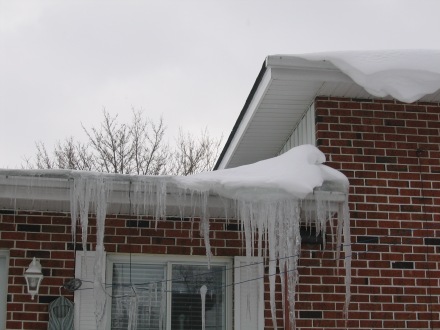After seeing the system presentation last year, and having had the endorsement from Jon Eakes, I considered adding the Tri-Energy system to my heating system, partly to get a better level of comfort, but primarily to reduce the overall cost of heating.
The system has been installed by Martin and his people, and we’re obtaining some experience with the operation. I’ve chosen to have the Ecobee 3 thermostat (wifi-enabled) in addition to the electronic relays (some of the upgrades to the basic system).
We’re now starting to compile the usage data.
The basic system is a high-efficiency oil furnace as the primary system (distributing the heat through a central air ductwork), with the heat pump delivering the majority of the heating and cooling when above the critical temperature (of -12C). The Tri-Energy system added a third element (the auxiliary heating coils), along with the Tri-Energy controller and the EcoBee 3 thermostat. The heating system also has a built-in humidifier.
We like to reduce the heat overnight, and raise it in the morning, so we have the thermostat set up with three settings: night-time, day-time and “away”. In the past, the older system would often sense that the heat needed in the morning is insufficient, and would switch to oil to raise the temperature to the target temperature quickly. That would then generate a pulse of hot air, before the temperature would settle to the target temperature.
With the new system, the auxiliary heating coils kick in, eliminating the need for the oil heat for quick temperature increase in the morning, and the Tri-Energy controller modulates the amount of heating needed by the auxiliary heating coils so that the temperature rise is very even. Of course, it does depend on how much heat can be delivered from the heat pump, so that there is more auxiliary heat needed on cold mornings (below 0C but above the critical temperature of -12C).
A recent innovation that Martin built into his system features a “pulse” feature on the oil heat. The usual operation of the oil furnace is full-on until the target temperature is reached. The new feature that Martin built in, pulses the oil furnace, so that it runs about 2 minutes on the burner, and then three minutes on the fan only. Since oil usually generates a lot of heat, this heat then builds up in the ductwork, and by the time the hot air is moving into the living space, there is a lot of heat stored in the duct system. With the new pulse feature, the running of the fan without the oil burner allows the air to run through the heated ducts, transferring some of the heat in the duct system, to the room air.
Compared to newer homes, we are still using more energy, and that can be traced to the lack of air sealing and insulation, something that we will have to improve over the next few years. However, we have the benefit of much more even heat, and hopefully, lower operating costs over the years.

